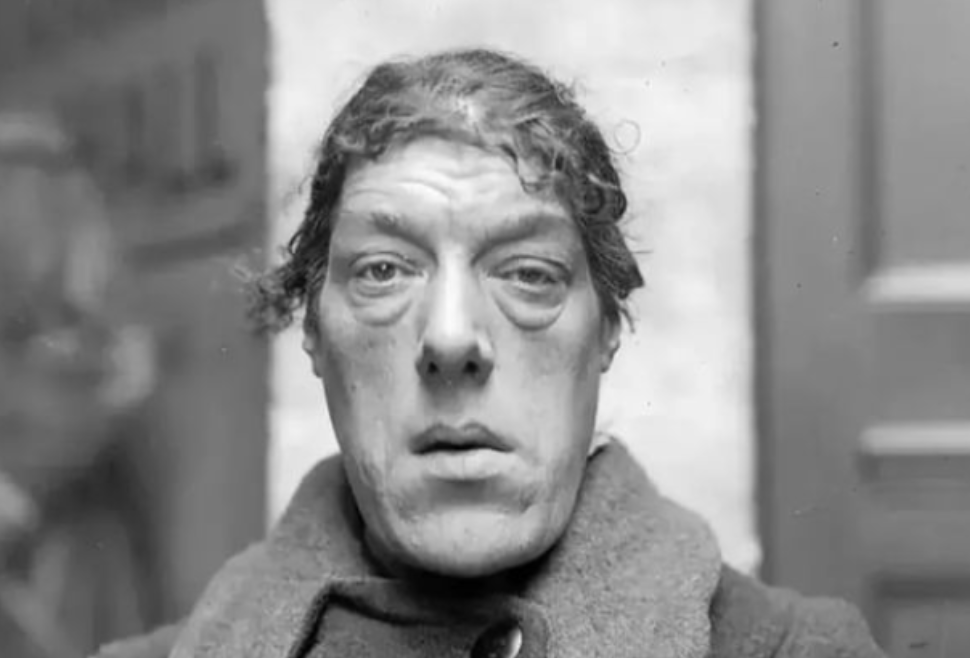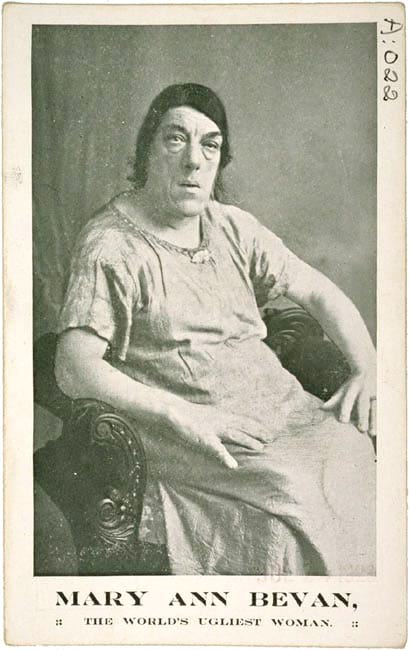
The Resilience of Mary Ann Bevan: Unveiling the Tragic Tale of the Woman Dubbed the ‘Ugliest in the World
Born in a London suburb in the late 19th century, Mary Ann Bevan, an English woman of striking beauty, faced an unforeseen destiny after being diagnosed with acromegaly.
Despite her initial appearance resembling any other young woman, circumstances led her to the grim reality of working in sideshows and circuses during the early 20th century. Labelled as the “Ugliest Woman in the World,” Mary Ann had to embrace a life in the spotlight at carnivals and various events to provide for her family and make ends meet.
The narrative surrounding her beauty took a drastic turn, illustrating the profound impact of her medical condition on her life and societal perceptions.

Mary Ann Webster’s life took a harrowing turn when, after reaching maturity and having several children, she was diagnosed with a rare and disfiguring illness. Over the course of a few years, this condition altered her face, hands, and feet irreversibly, leaving her with no choice but to rely on her appearance for financial support.
Emerging as one of the most tragic figures in the once-prosperous sideshow industry, Mary Ann Bevan herself shares the poignant journey that led to her being labeled the “Ugliest Woman in the World.”
Mary Ann Bevan’s early years were rooted in a large family on the outskirts of London, where she was born as Mary Ann Webster on December 20, 1874. Raised in a manner no different from her siblings, she pursued nursing education, completing it in 1894, and later married Thomas Bevan, a farmer from Kent, in 1903.
Their marital bliss initially flourished with the birth of two healthy sons and two healthy daughters, marking a promising start to the Bevans’ family life. However, fate would soon take an unforeseen and tragic turn, altering the course of Mary Ann’s life in ways she could never have anticipated.

Struggling with a modest income, Mary found herself thrust into the role of a sole provider for their four young children after the sudden death of her husband, Thomas, in 1914.
In the aftermath of Thomas’s passing, Mary began exhibiting symptoms of acromegaly, a rare disorder characterized by the excessive production of growth hormone from the pituitary gland. While acromegaly is currently treatable if detected early, the medical landscape of the early 20th century offered limited options.
Mary Bevan’s appearance underwent a profound transformation as the effects of acromegaly took hold. Unfortunately, the prevailing medical constraints of the time meant that little could be done to address her condition. Acromegaly brings with it a host of potential complications, including heart disease, kidney problems, and sleep apnea.
The relentless progression of Mary’s illness manifested in the dramatic enlargement of her nose, the protrusion of her forehead and lower jaw, and the disproportionate swelling of her once-typical small hands and feet. This physical metamorphosis marked the beginning of Mary Ann Bevan’s journey into a life that would lead her to be known as the “Ugliest Woman in the World.”

As Mary Ann Bevan’s appearance underwent irreversible changes due to her uncommon disease, she faced the challenge of securing steady employment. The transformation made it increasingly difficult for her to find conventional work, leading her to take on various odd occupations to provide for her family.
An incident with a former fairground worker left a lasting impact on Bevan. The farmer she had worked for years earlier callously suggested that her only suitable path was to participate in an “ugly woman competition.” Inspired by this advice, she entered and triumphed in the “Homeliest Woman” contest, surpassing 250 other contestants.
Recognizing that her medical condition would continue to worsen, Bevan decided to leverage her success for the well-being of her children. Sideshow proprietors took notice of her victory, and soon she found steady employment performing at fairs across the British Isles.
In 1920, an intriguing newspaper advertisement seeking the “Ugliest woman” caught Bevan’s attention. Placed by a British agent for Barnum and Bailey’s circus, the ad sought an individual with “the face of an ugly woman that was not unpleasant.” Responding to the call, Mary Ann Bevan embraced her new role in the sideshow, marking the beginning of her success in the world of spectacle.

Mary Ann Bevan’s journey through the world of sideshows and carnivals, marked by financial struggles and societal judgment, showcases her resilience and determination to provide for her family in the face of adversity. Selling postcards at fairs, she earned a modest income, but her life took a turn when she joined the sideshow at Coney Island’s Dreamland amusement park, becoming one of its featured attractions alongside other unique individuals.
Despite the degrading treatment she endured, Bevan faced it with a mechanical smile, offering postcards of herself for sale to secure financial stability for her children. Her popularity soared, and by the 1930s, she became a featured act in the renowned Ringling Bros. and Barnum & Bailey circus, achieving financial success in the process.
In her final years, Mary Ann Bevan continued as a staple at the Dreamland sideshow in Coney Island, forming friendships within and outside the sideshow scene. Despite societal opinions, she found love with Andrew, the giraffe keeper, and even indulged in pampering at a New York City salon.
Mary Ann Bevan’s death in 1933 marked the end of a unique and challenging life. She worked on Coney Island until her last days, passing away at the age of 59. Her body was returned to England for burial in Brockley and Ladywell Cemetery in Southeast London.
While largely forgotten by the public, Mary Ann Bevan’s story resurfaced in the early 2000s when her likeness was mockingly used on a Hallmark card. Due to objections and concerns about further humiliation, the card was discontinued. This narrative serves as a testament to the resilience and strength of a woman who faced adversity with a steadfast determination to provide for her family.
Share her story to honor the memory of this brave woman.